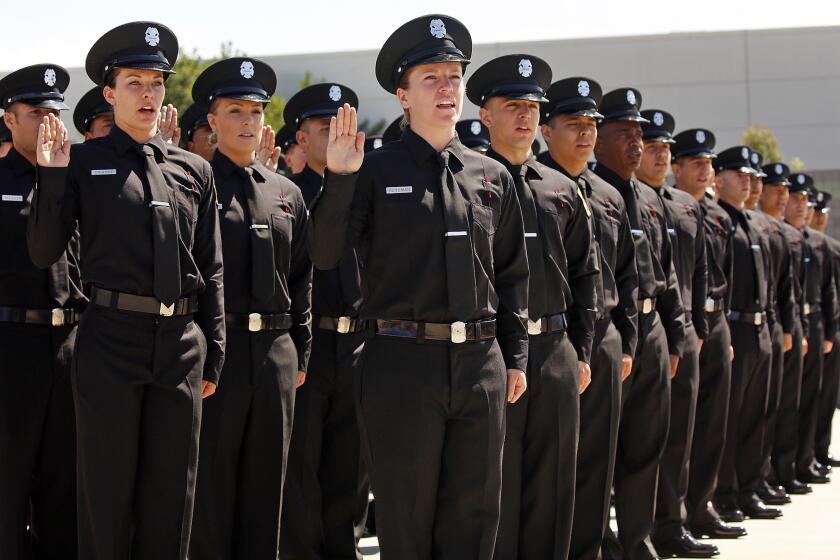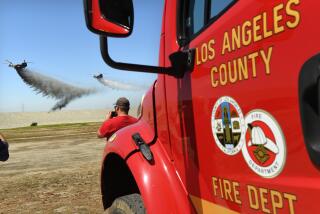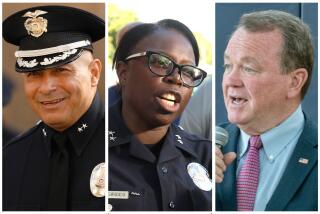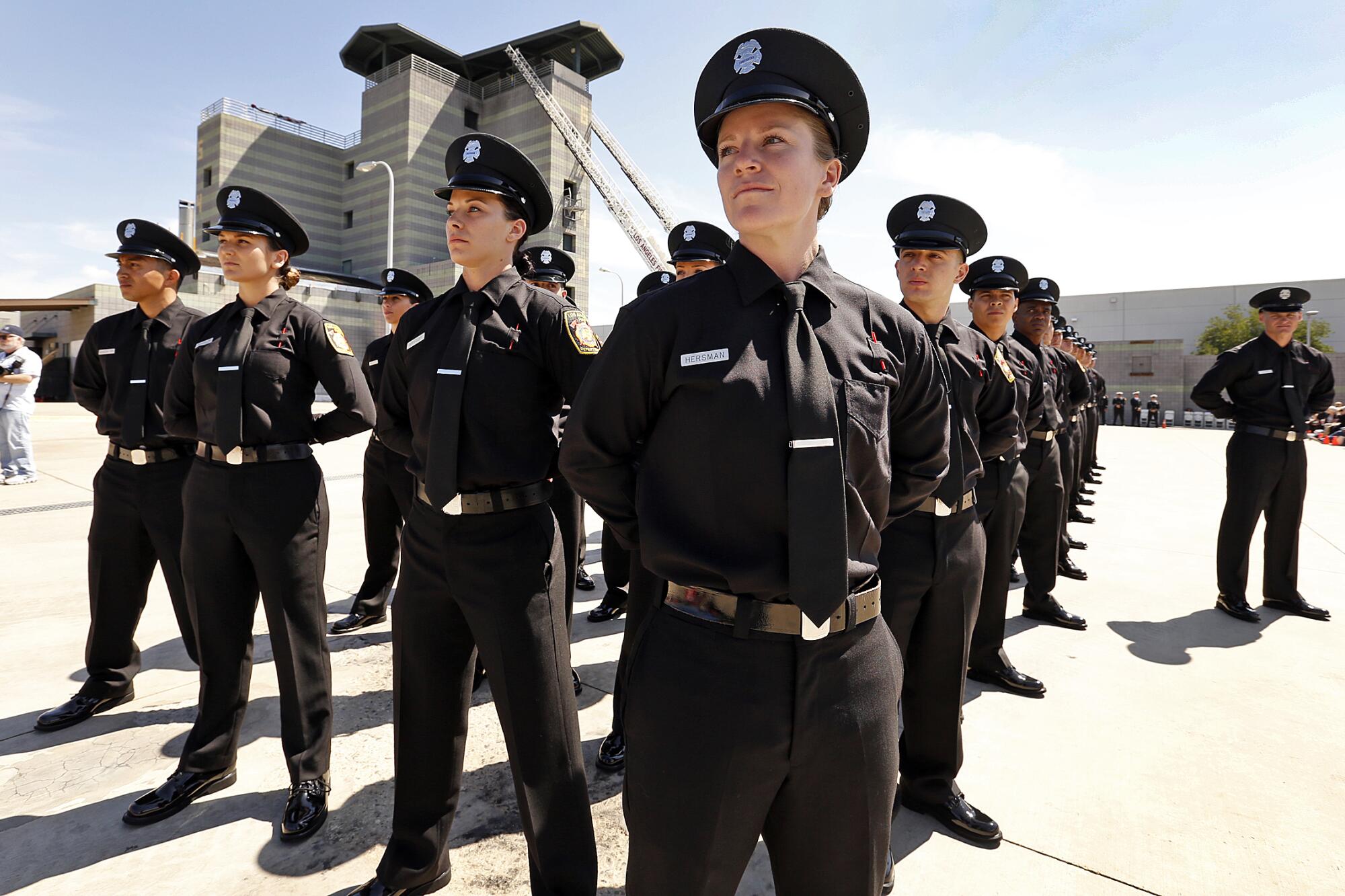
Katie Becker wanted to leave no doubt about what had driven her out of the Los Angeles Fire Department. So the young firefighter emailed top brass at the LAFD in the spring of 2019 to denounce the sexism she said she experienced in a department “littered with cruel leadership and misogynistic co-workers.”
Becker’s complaint felt like a gut punch to a group of veteran women at the 3,304-member Fire Department, affirming to them that the agency’s “frat house” culture endured.
The high-ranking women met with Mayor Eric Garcetti that summer to show him a follow-up letter Becker had written about her experiences at the department. For the women, it was a chance to show the mayor that more urgent action was needed to fulfill his promise of expanding the ranks of female firefighters and to overhaul an LAFD culture in which women and minority firefighters said they frequently felt bullied and mistreated.
But despite that meeting, and repeated pledges by Garcetti over the years to address gender equity, advocates for women in the Fire Department are dismayed by what they view as slow progress. Their unhappiness burst into view in recent weeks, amid a public falling-out between the Garcetti administration and two of its appointees on the Fire Commission who have been the most vocal advocates for women’s rights.
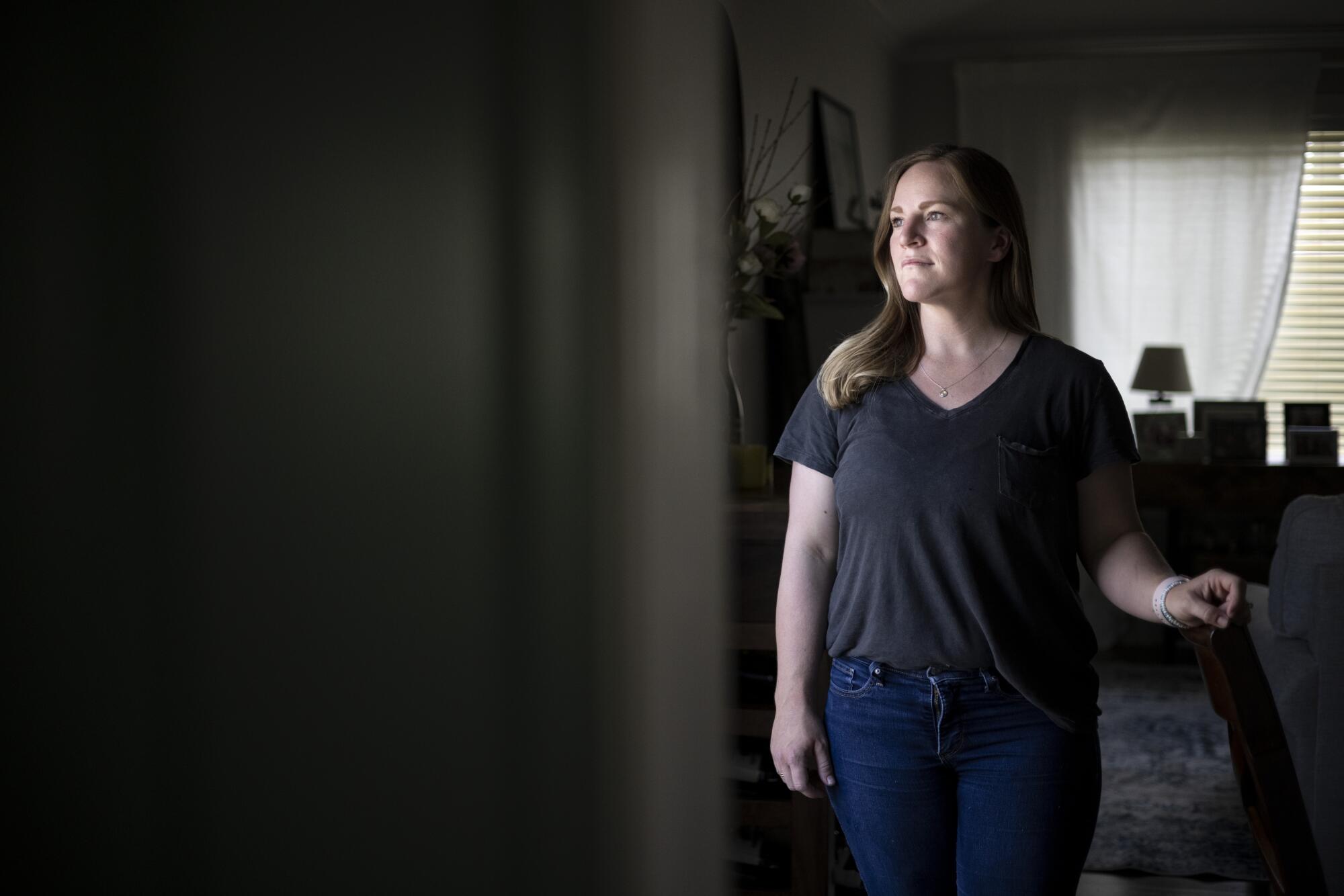
Garcetti and his administration, concluding their eighth year in office, get credit for expanding the number of women serving as firefighters and in the higher ranks of the department. But the mayor has little time left, until his term ends in late 2022, to convince critics he’s effected deeper change at the LAFD.
Women now hold 115 jobs, or 3.5% of the sworn personnel, an improvement over the 2.9% when Garcetti took office in 2013. To reach 5% or more — a long-standing goal of the mayor’s — advocates say more needs to be done to tamp down a male-dominated ethos that pervades the LAFD.
Los Angeles Women in the Fire Service, an advocacy group for women at the department, says that a study of workplace culture has been delayed for more than three years, leaving the precise sentiments of women and others unquantified.
The women’s organization expressed outrage in June over what it called the mayor’s lack of support for one of his own fire commissioners and his backing of a new commissioner it considers weaker on diversity issues.
Andrew Glazier was removed from the commission and replaced by Corinne Babcock, a move the women’s firefighting group called “a monumental step backward.” The mayor’s chief of staff had already asked another ardent supporter of women, Rebecca Ninburg, to move to another city commission. She declined, and remains on the panel.
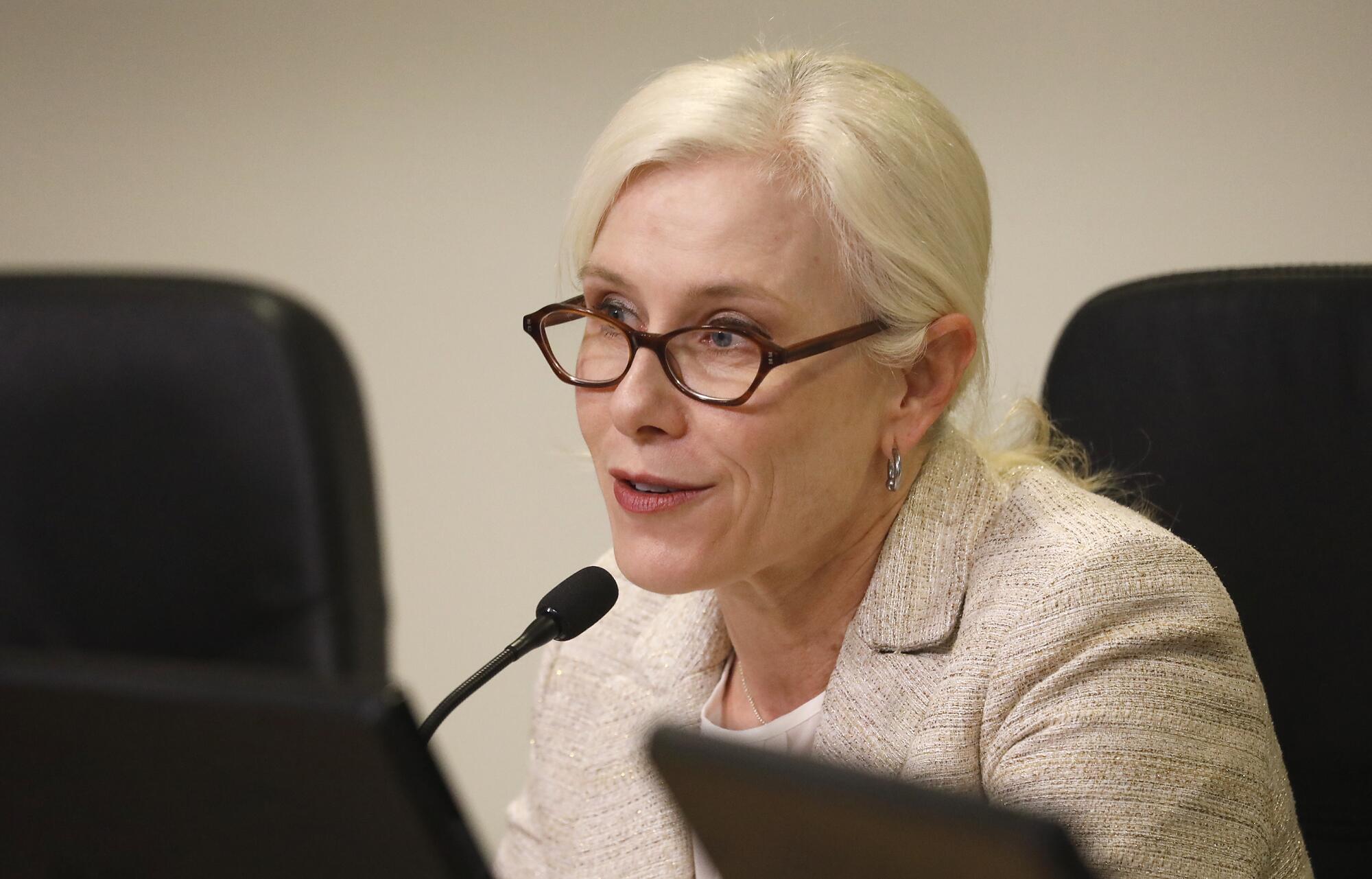
The intense scrutiny of the 135-year-old department only increased in mid-June, when a group of six Black employees in the Fire Prevention Bureau sued the city. The workers — who conduct fire safety inspections and investigate the cause of fires — allege that the LAFD is governed by a “good old white boys club,” with perceived outsiders denied fair chances for promotions. (The city would not comment on the pending litigation.)
Garcetti is on track to miss his goal to greatly increase the number of female LAFD firefighters, renewing questions about why more women aren’t on the force.
The furor inside the Fire Department has created complicated political crosscurrents: some of Garcetti’s Fire Commission appointees effectively outflanking him on one of his signature issues, and the politically powerful firefighters union — a potential ally in any run for higher office — remaining loyal to the mayor’s approach.
“Mayor Garcetti has claimed time and again that he is committed to equity for women and people of color,” said Ninburg, who heads a nonprofit that encourages civic engagement. “Our female and minority firefighters need him to step up and put into practice what he’s been preaching.”
Garcetti declined a request for an interview. But his deputy mayor for public safety scoffed at the notion that the mayor had fallen short on advocating for women and underrepresented groups.
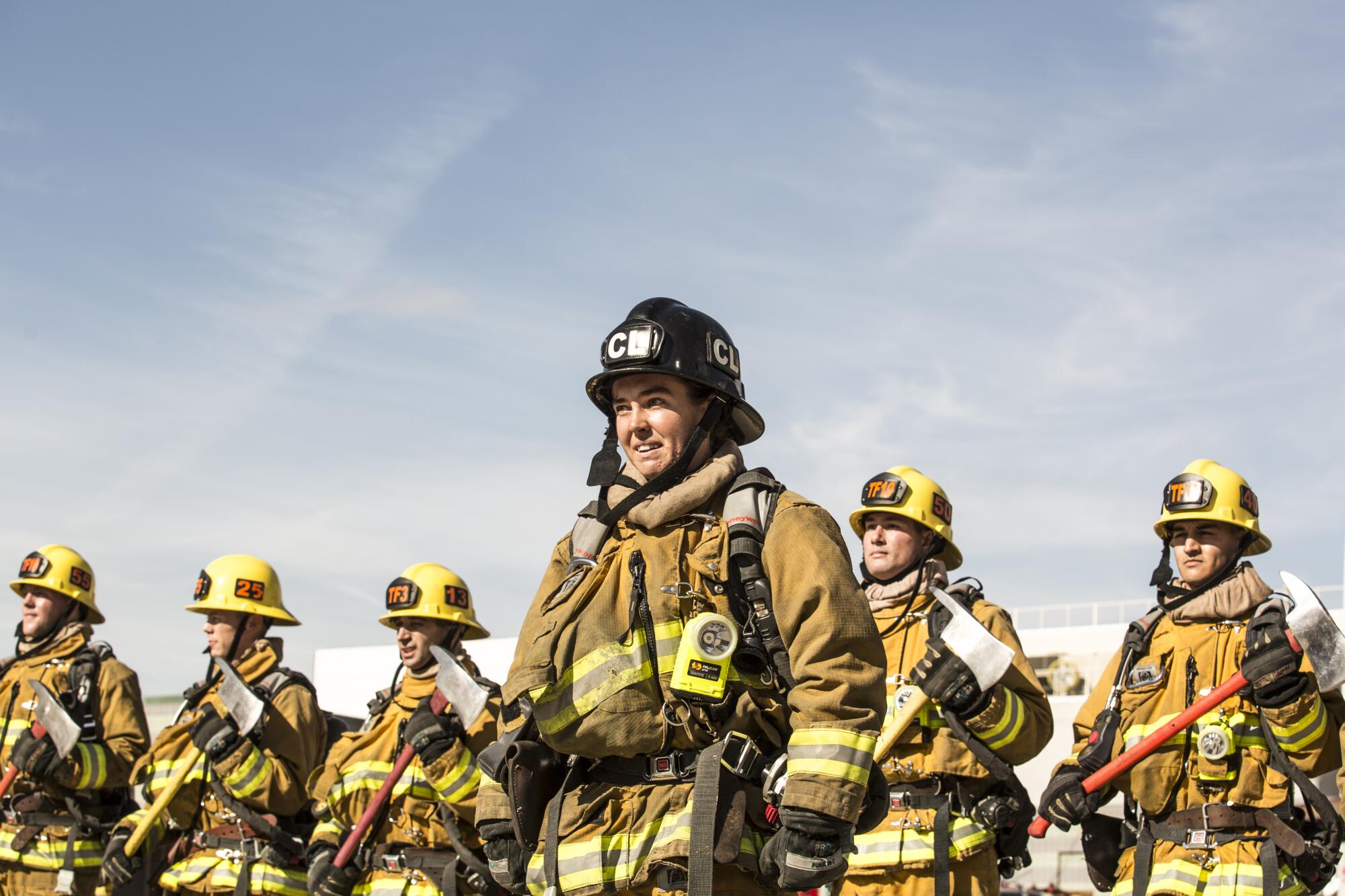
“Mayor Garcetti has taken bolder, more progressive steps to advance gender and racial equity in the Fire Department than any mayor in L.A.’s history,” Deputy Mayor Jeff Gorell said. “Any suggestion that he isn’t fully committed to these goals is inaccurate and inconsistent with what his record clearly shows.”
Rick Taylor, a longtime political consultant in Los Angeles, said Garcetti’s political calculus did not seem very different from that of other elected officials before him.
“It looks like he is supporting the union, which has a lot of clout, along with the management of the Fire Department,” said Taylor, whose firm represented the United Firefighters of Los Angeles City, or UFLAC, more than a decade ago. “He’s made the calculation that it’s a smarter move than following others who appear to be on a more progressive path than his longtime supporters in the union.”
Ninburg, who helped create a countywide alliance supporting female firefighters and founded a women’s roller derby league, argued that “siding with a union may often be politically expedient for Democrats.”
“But if a union argues against its own female and minority members’ best interests,” she added, “that’s problematic.”
Union President Freddy Escobar rejected the notion that UFLAC blocks progress, saying it has joined with the department in a high school magnet, cadet and girls’ camp programs — all designed to boost recruitment of women and underrepresented groups.
“We can continue to hire only the best and brightest LAFD firefighters and do a better job with ethnic and gender diversity,” Escobar said via email. “UFLAC is committed to this goal.”
The fight for gender and racial equity has stirred dissension inside the fire agency for decades.
Subscribers get early access to this story
We’re offering L.A. Times subscribers first access to our best journalism. Thank you for your support.
In 1996, Mayor Richard Riordan forced out Fire Commissioner Leslie Song Winner, who had been an unbending advocate for women and members of minority groups. Riordan accused her of not being a team player.
In 2007, the city paid $1.5 million to settle a lawsuit by Tennie Pierce, a Black firefighter who was fed dog food in a firehouse prank. In 2014, the first academy class after a five-year hiring freeze was 60% white and included just one woman, which led Garcetti to demand the department revamp its hiring process.
By 2019, around the time Becker left the LAFD, the women’s firefighting organization found in a survey that its members largely had positive experiences in the recruit academy but reported widespread sexism once they deployed to fire stations.
The women said they were targeted with sexist remarks, with one describing unsolicited concern over her menstrual cycle. Nearly half said they hesitated to report misconduct, lest they be labeled “that kind of girl,” said one female firefighter.
Despite the challenges, the LAFD employs more women than the L.A. County Fire Department, where women make up 2% of the 3,153 sworn firefighters. It lags well behind San Francisco, where 13.7% of the 1,397 firefighters are female.
The first hurdle for many women in the L.A. city department is its demanding fire academy. From 2014 to 2017, 59% of women graduated from the 22-week program, while men had an 85% graduation rate. That resulted in 654 men being sent to city fire stations, compared with 36 women. That’s above the mayor’s 5% target.
But progress can be halting.
Just three of the seven women who entered the academy in December graduated with their class in May. The three had all failed previous attempts, meaning they needed two tries to get through the academy. And failure is expensive — it costs roughly $125,000 to get one recruit through training.
The discussion about the hiring and retention of women took on a more contentious tone after Becker’s letter circulated through the upper ranks of the Fire Department.
The recruit had grown up in Westchester and graduated from the University of Colorado before she took a class to be an emergency medical technician and realized she had found her calling in the emergency services. She applied to a few departments and heard back first from her hometown LAFD.
But her experience turned ugly from the first day at the academy, she said in her post-resignation letter. In the harsh atmosphere, her new colleagues actively rooted for her to fail, she recalled.
Things got no better during her probationary year. Becker told of women being flashed by male colleagues in firehouse locker rooms and how others told her they didn’t want to work with a “chick.”
“Bigoted men … actively tried to make me and most of my co-workers miserable,” Becker wrote. She called her four years in the LAFD “the worst of my life.”
Glazier, the fire commissioner, who runs a nonprofit that supports previously incarcerated men and women, emailed Fire Chief Ralph Terrazas after Becker’s letter arrived in 2019. He said he had “very serious concerns about the culture in our department and how we are treating all probationary firefighters, particularly women.”
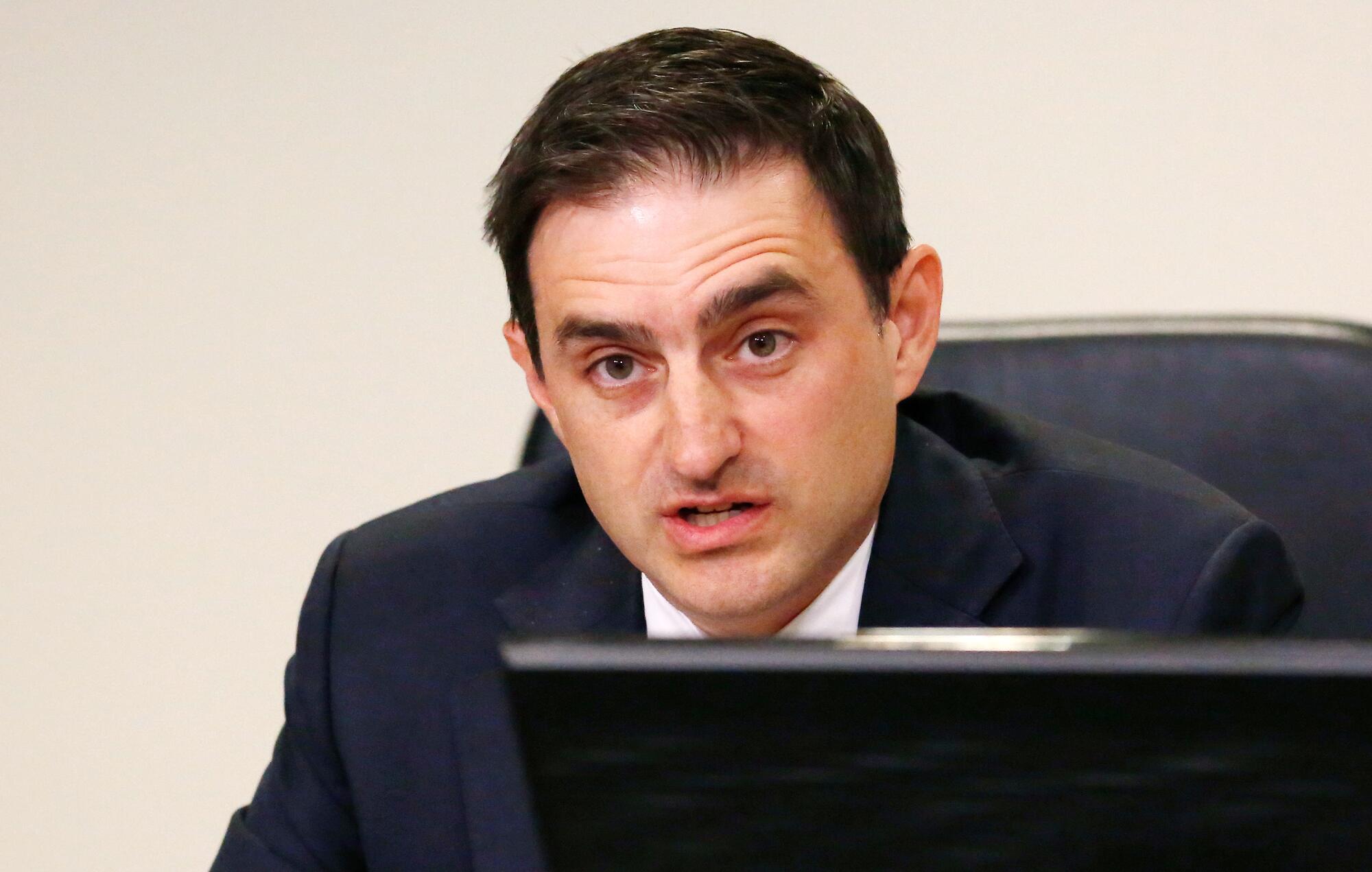
Glazier said in an email that his conversations with employees convinced him that Becker’s lonely and painful ordeal “very much rings true for multiple people in this department,” adding that the “culture of this department remains deeply problematic.”
The fire chief rejected Glazier’s assessment. “While we are not perfect, I am very proud of our culture of safety and training,” Terrazas wrote.
Terrazas, 61, wrote to Glazier saying he had checked out Becker’s complaint and concluded that it “would not lead to actionable information on which we could address identified issues.”
He said he reached that finding based on his years of experience, Becker’s unwillingness to give a follow-up interview, and a conversation with a female ranking officer who witnessed the former firefighter’s training and said her critiques were “not correct.”
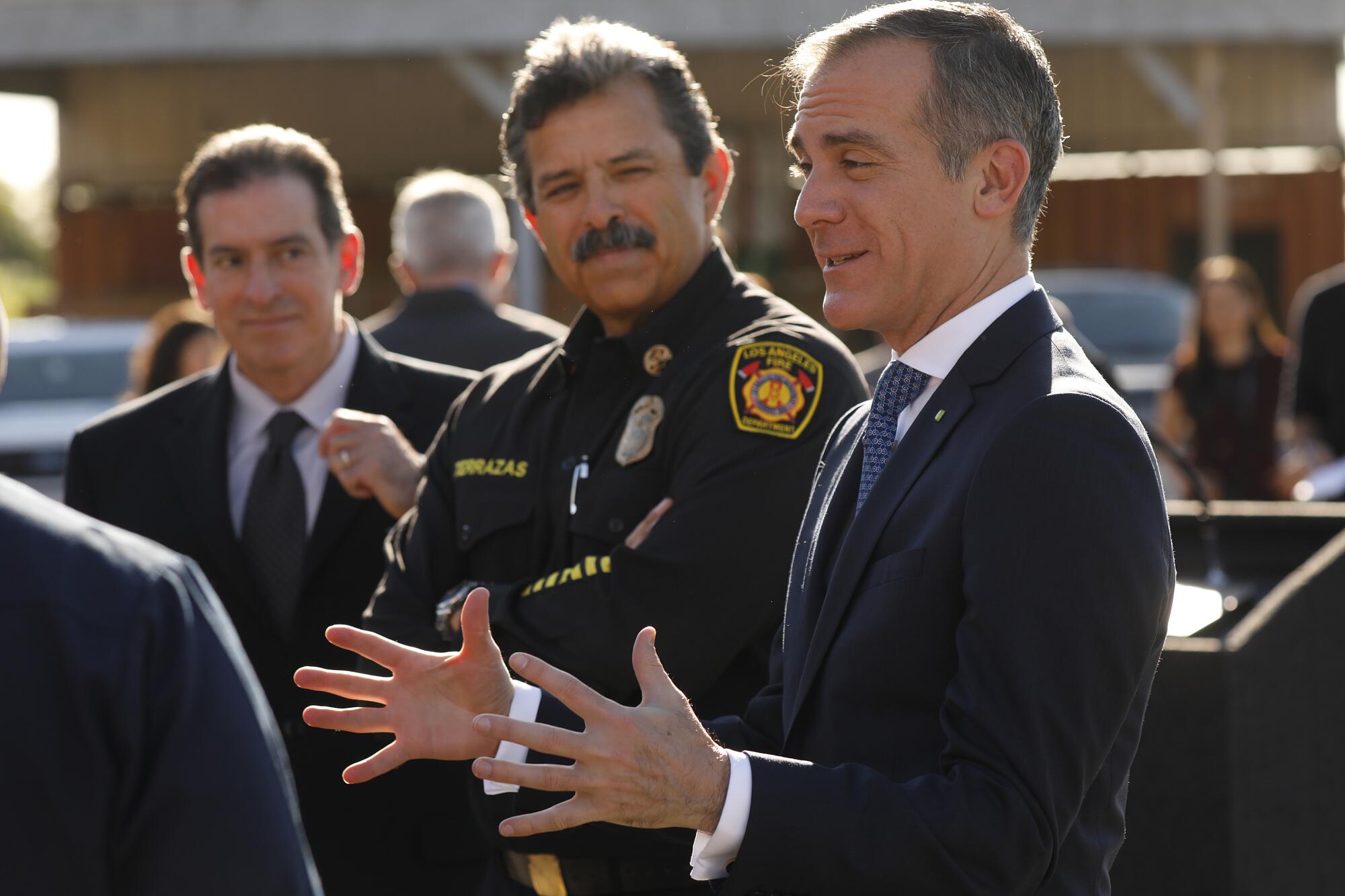
In his email, the chief did not directly address Becker’s many complaints about mistreatment after she left the academy. But he pledged to send a message to employees “on the importance of creating a positive work environment in advance of the arrival of a new member.”
Glazier continued to press for more, telling the chief in another email, reviewed by The Times: “The deeper question you should be asking after receiving a letter like this is ‘Do the complaints about the culture ring true for others?’”
Commission President Delia Ibarra defended the chief and the department, saying in her own email to Glazier that he didn’t understand that “many, many people” had addressed Becker’s concerns “with some urgency.” She cautioned him to approach Fire Department leaders with “collegiality and professionalism.”
Escalating the frustration of Los Angeles Women in the Fire Service as well as Black firefighters was the halting effort to complete two studies about the lot of women and people of color in the department.
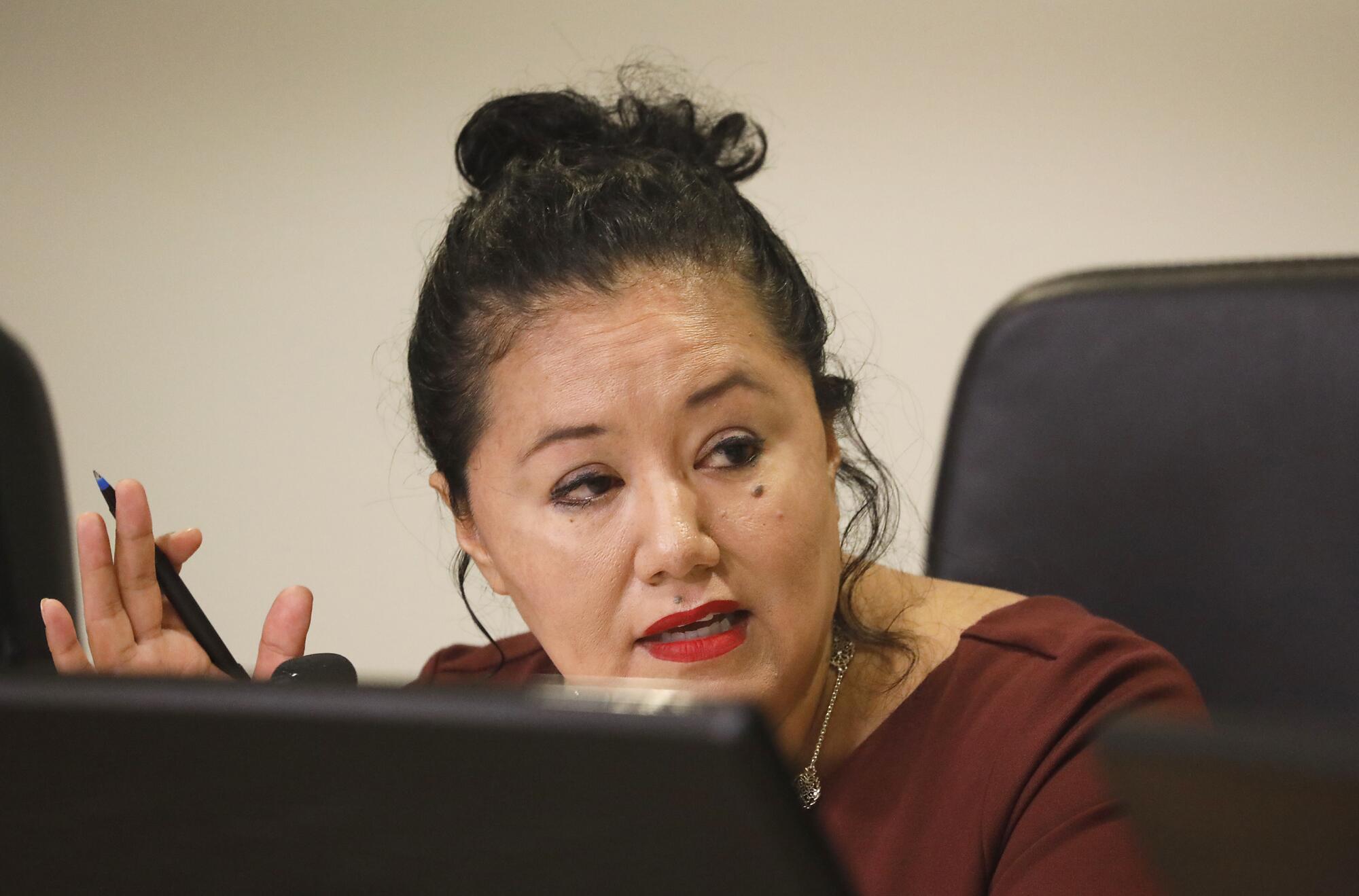
The first was an “organizational assessment” in which an outside consultant would search out any flaws or biases in the LAFD’s hiring, retention and promotion policies.
Funding for the study was included in the mayor’s budget in 2018, but Garcetti’s team said the $250,000 was inadvertently left out of a final version of the spending plan. The money bounced in and out of the budget several times, most recently when the COVID-19 pandemic hit. This spring, Terrazas set aside $200,000 in grant money for the work, with the review finally scheduled to be completed in 2022.
The second study, designed to ferret out any inequities in the fire academy, has also dragged on for three years, in part because the firefighters union insisted that personnel files be reviewed only after firefighters’ names were redacted.
The delays helped fuel increasing tension inside Garcetti’s Fire Commission. During a commission meeting early in 2020, Glazier lambasted a department culture that he said “primarily hears only what it wants to hear, that discourages honest discussion for fear of looking bad. And that avoids, actively, confronting uncomfortable truths.”
Escobar, the union president, called Glazier “insulting” and wrong. The 32-year LAFD veteran told the commissioner: “It has changed, brother. And it has changed more than you realize.”
Ibarra, the commission president, backed the department and Chief Terrazas, saying the department “is going in the right direction.” She worried aloud that the push for data on the training academy would provoke “anxiety” among firefighters worried that the LAFD’s standards would be compromised. Jimmie Woods-Gray and other commissioners chastised Ibarra, saying they couldn’t make improvements to LAFD training without a thorough review.
Some women have complained, for example, that the training academy requires certain techniques for placing and extending fire ladders that are nearly impossible for shorter recruits, often women. Workarounds that allow the ladders to be safely and effectively deployed in the field are not permitted in the academy, they said, and a thorough study of standards for raising ladders has not been completed.
Los Angeles Women in the Fire Service and the Stentorians, representing Black employees of the Fire Department, told the commission in 2020 that they had grown tired of the unproven claim that any change in training requirements would reduce safety.
Battalion Chief Kris Larson rejected as “blatantly not true” any contention that less qualified women and people of color were hired unfairly. Robert Hawkins, a member of the Stentorians, said, “In actuality, we have had to exceed standards.”
The emotionally fraught debate has divided the Fire Commission, where the last vestiges of collegiality slipped away in mid-May. That’s when the commission debated who should set the agenda for the panel.
Ibarra, a lawyer, insisted she was in charge because Garcetti had asked her to be commission president. But the majority of the mayor’s appointees demanded Ibarra hold an election, as the City Charter requires annually, knowing they would probably be able to elect a new commission president.
Even after the city attorney’s office directed that an election be held, Ibarra declined to schedule one. She said she was waiting for direction from Garcetti’s office.
At a May commission meeting, Glazier accused Ibarra of “dereliction of duty” and “a bit of an authoritarian streak.” Woods-Gray said in an interview that a new commission president would help “push more forcefully with the hiring and retention goals” for women and people of color.
In an interview, Ibarra accused other commissioners of “grandstanding” and insisted she had made quiet progress on the equity issues. “These are issues I have championed my whole life,” she said, “and not just on the Fire Department.”
When Garcetti named Corinne Babcock as Glazier’s replacement on the commission, the furor erupted anew. In a letter to the mayor, Los Angeles Women in the Fire Service noted that Babcock, while serving as a police and fire pension commissioner, had supported a full disability pension for the widow of a fire captain whose suicide “was triggered ‘based on pressure to pass women in the fire academy.’”
“This is an outrageous affront to the hard work and effort that all the recruits, men and women, devote to their academy training,” the women’s group protested in its letter. Babcock did not respond to a request for comment.
The opponents’ frustration only expanded last week when the groups representing Black and female firefighters did not get time to speak against Babcock’s confirmation when it came before the City Council. Another employee group, which favored Garcetti’s pick, got time to offer its endorsement. On a council heavily allied with organized labor, Babcock was approved by a 13-2 vote, without discussion.
Garcetti’s aides urged a focus away from the recent furor and on “success stories” such as Deputy Chief Kristin Crowley. In a little more than 20 years, Crowley has risen to become the highest-ranking woman in the LAFD, positioning her to potentially lead the agency one day.
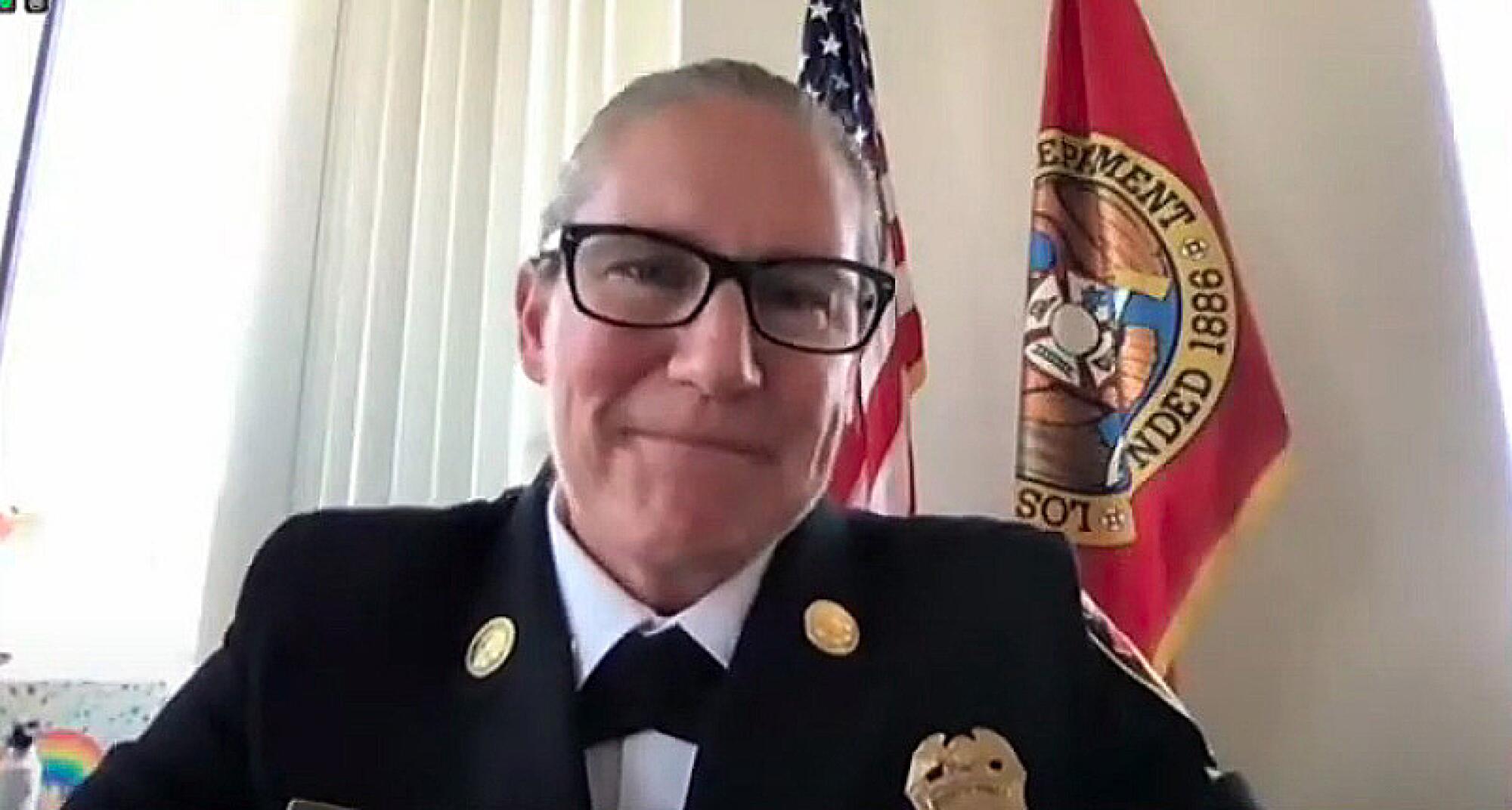
Crowley, 50, said she had seen real progress since she joined the department. Women have made greater inroads in the upper echelons of the Fire Department than among the rank and file. Of the 92 individuals who are battalion chiefs or above, nine are women. That’s nearly 10% of the “chief officers” in the LAFD.
Crowley said her climb up the ranks put her in a better position to assure opportunities for women and other underrepresented groups. She said she wanted to serve as an example to others. Yet she understands why other women express impatience for the organizational assessment.
“The good news now is that it’s here,” Crowley said. “We are moving forward with the study.”
Given past delays and inertia, several other female chief officers said they remained skeptical. “You can’t dispute that they brought in more women,” said one high-ranking veteran, who spoke on the condition of anonymity out of fear of blowback from male colleagues. “But to what end? To bring them on a job where they will be treated like crap for 30 years?”
She said Becker’s early departure from the department should still stand as a “red flag” inside the LAFD.
At 31, Becker said she was now ready to talk about her experiences, if anyone inside the Fire Department thinks the information would help make things better.
But she’s mostly focused on her new life in Colorado, which she shares with her husband and baby boy. She’s working at a fire department in the Denver suburbs, getting support from her colleagues and feeling “like I can serve the community again.”
“I love being a firefighter,” Becker said. “I love my job.”
More to Read
Sign up for Essential California
The most important California stories and recommendations in your inbox every morning.
You may occasionally receive promotional content from the Los Angeles Times.
